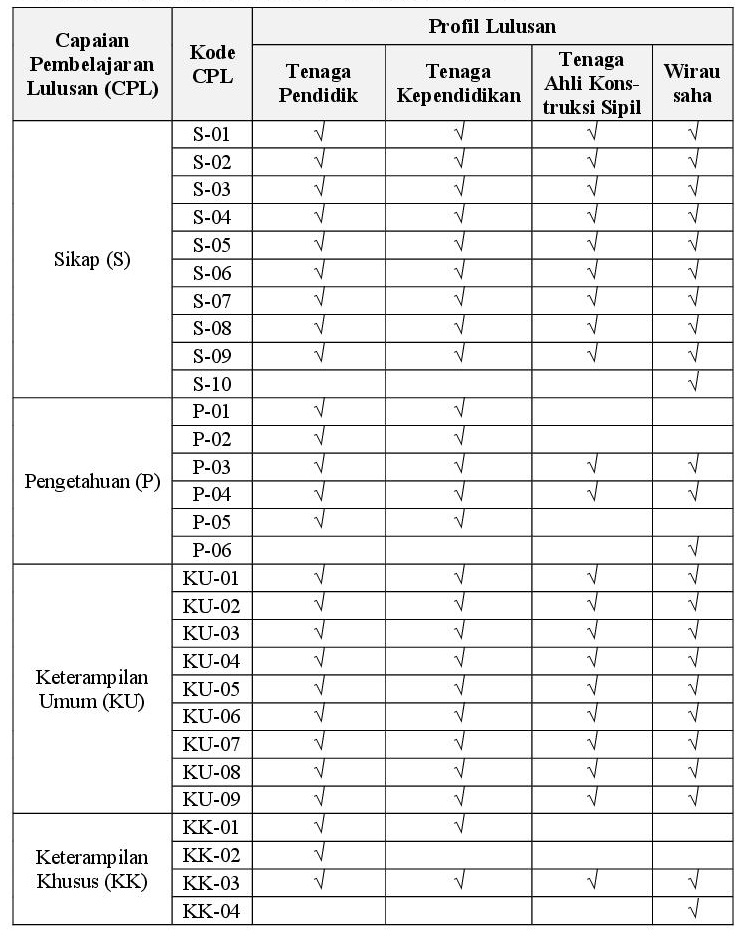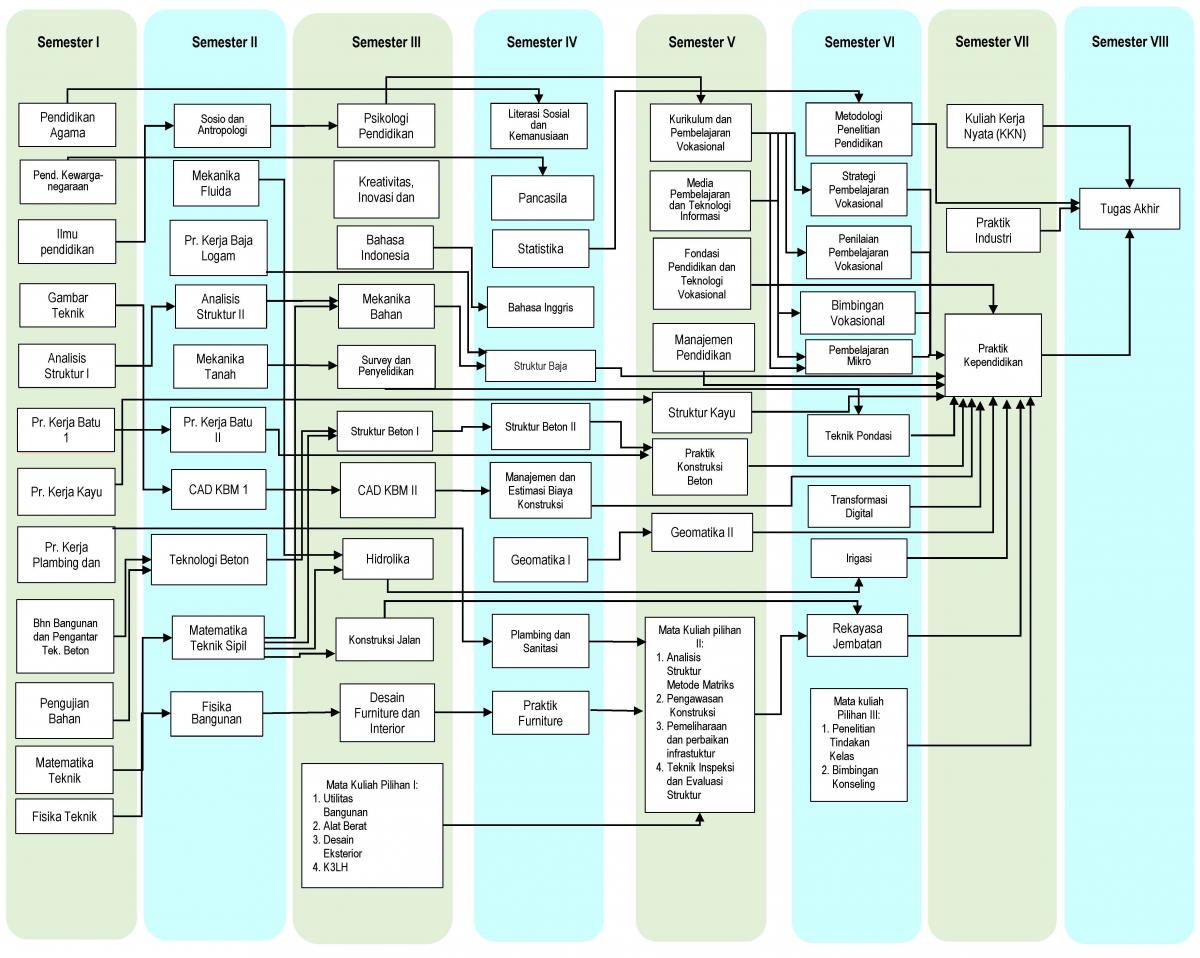Civil Engineering and Planning Education Study Program
Address : Kampus Karangmalang, Yogyakarta, 55281
Telephone : +62 274 586168 ext. 1286 and +62 274 554692
Email. : ptsp@uny.ac.id
The PTSP Study Program always involves stakeholders in every stage of activity starting from curriculum formulation, curriculum evaluation to updating the curriculum to obtain conformity between learning outcomes and graduate profiles based on the IQF and the accuracy of the curriculum structure in learning outcomes until it is passed down to learning outcomes per course. In general, the PTSP Study Program has carried out the following activities. The PTSP Study Program periodically every 4 years invites graduate users (Business and Industry and Vocational High Schools), Associations, Professional Organizations, and Experts in the field of vocational learning to evaluate and update the PTSP curriculum based on the latest developments/demands of Science and Technology and the needs of prospective Users of PTSP graduates, which in general the process is explained through the image below.

In determining learning outcomes with graduate profiles of the Civil Engineering and Planning Education Study Program, an in-depth study has been carried out so that all subjects taught by student heads are in accordance with graduate learning outcomes and the expected graduate profile. The following table shows the relationship matrix between graduate profiles and CPL.
Table of Relationship Matrix between Graduate Profiles and CPL

The curriculum structure of the PTSP undergraduate study program has been prepared by linking courses with graduate learning outcomes. All Course Learning Outcomes are always guided by the Graduate Learning Outcomes by using a curriculum map. The learning outcomes are planned to be achieved in stages with the following levels.
1st year: Students taking courses in the first year have deeper abilities about religion and nationalism, have basic skills in civil engineering and the basics of education.
2nd year: Students taking courses in the second year have the ability to apply civil engineering sciences and advanced educational sciences.
3rd year: Students taking courses in the third year have the ability to apply advanced civil engineering knowledge and the application of educational sciences.
4th year: Students taking courses in the fourth year have the field skills to solve civil construction problems, and have the field skills to carry out learning in Vocational High Schools.
Map of S1 Civil Engineering and Planning Education Study Program Courses

The complete curriculum for the Bachelor of Civil Engineering and Planning Study Program can be downloaded at the following link: DOWNLOAD
Civil Engineering and Planning Education Study Program
Address : Kampus Karangmalang, Yogyakarta, 55281
Telephone : +62 274 586168 ext. 1286 and +62 274 554692
Email. : ptsp@uny.ac.id
Copyright © 2024,
